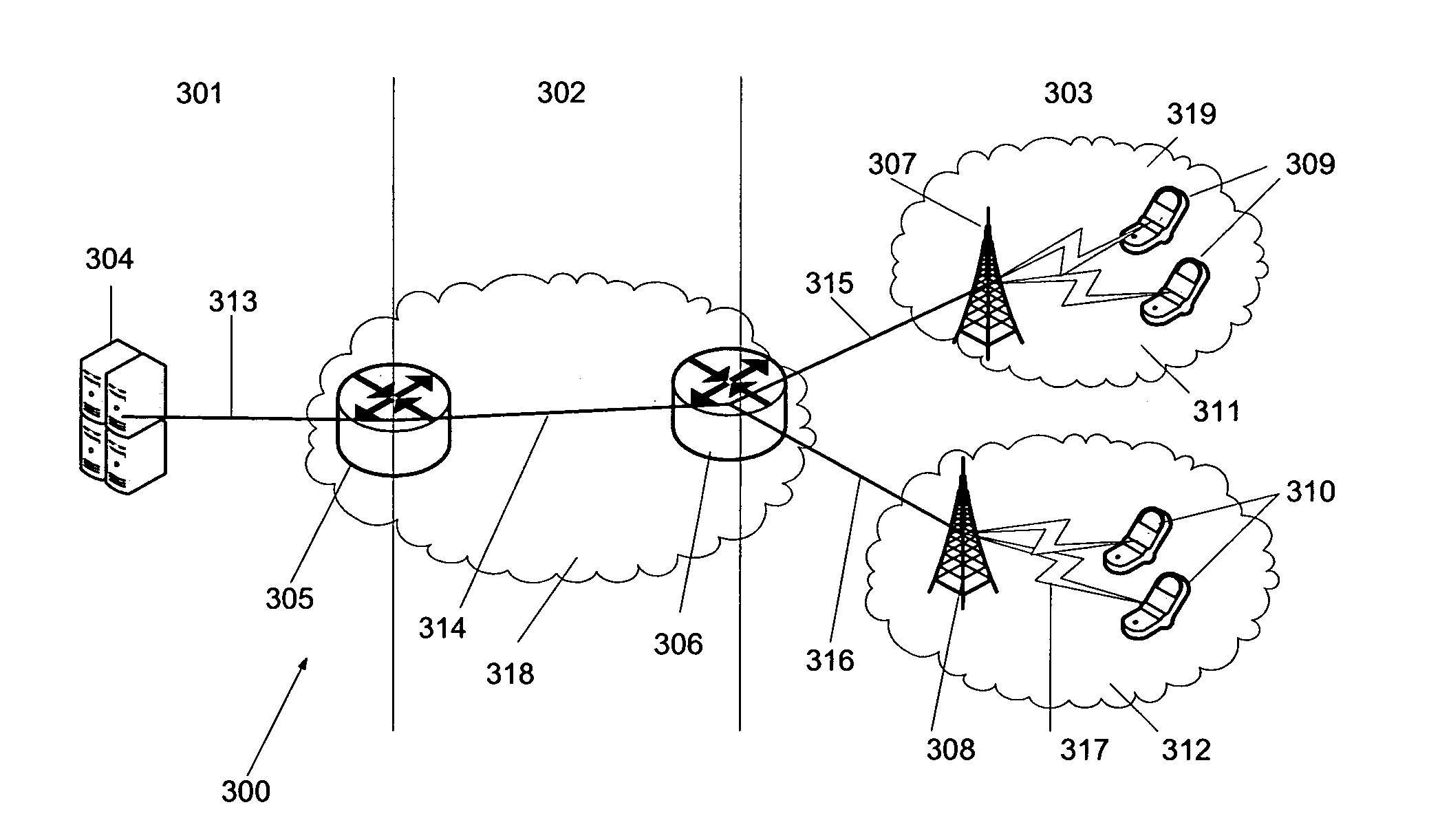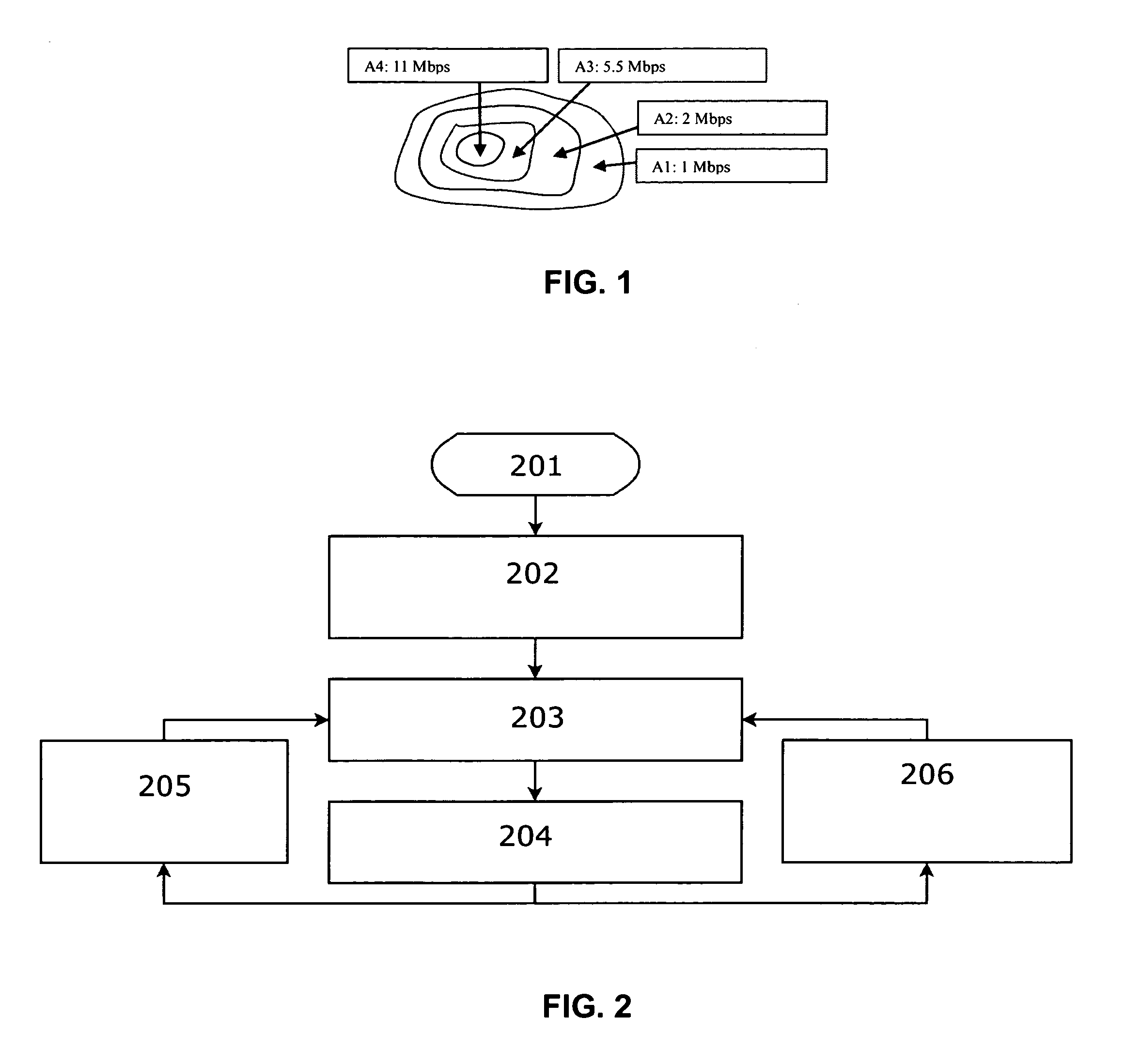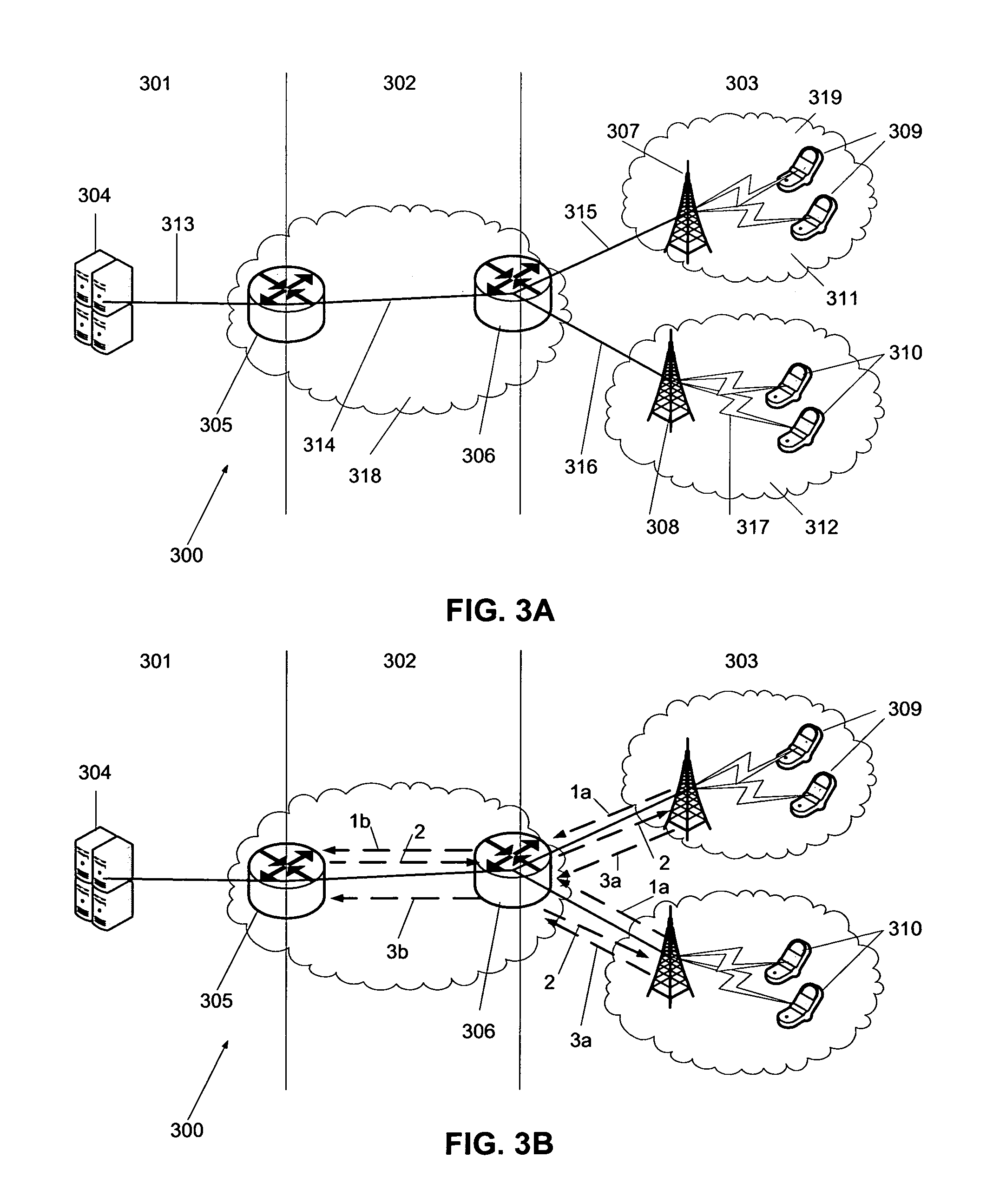Wireless Multicast for Layered Media
a radio resource and multicast technology, applied in the field of wireless communication, can solve the problems of unable to apply in wireless networks, and not using capability information, so as to maximize the optimal use of communication resources, and maximize the average of user perceived quality
- Summary
- Abstract
- Description
- Claims
- Application Information
AI Technical Summary
Benefits of technology
Problems solved by technology
Method used
Image
Examples
Embodiment Construction
[0037]Briefly, the method of the invention incorporates knowledge about the receiving capabilities of the users and the quality properties of the layered media. The idea is a centralized optimization process in wireless access networks, where the Media Gateway collects the receiving capability information of the users, determines the optimal data rate for each layer and informs the AP's which data rate to use for each layer.
[0038]To achieve these requirements, following are provided in accordance with preferred embodiments:[0039]a system with a protocol extension and a framework to obtain the information of the receiving capabilities of the users. I) A new IGMP message type or similar is provided to report the receiving capabilities of the users. II) Databases or registers are provided to store the receiving capabilities of the users and the media descriptor parameters. III) A method is provided for finding out the actual receiving capabilities of the users.[0040]a method to inform ...
PUM
 Login to View More
Login to View More Abstract
Description
Claims
Application Information
 Login to View More
Login to View More - R&D
- Intellectual Property
- Life Sciences
- Materials
- Tech Scout
- Unparalleled Data Quality
- Higher Quality Content
- 60% Fewer Hallucinations
Browse by: Latest US Patents, China's latest patents, Technical Efficacy Thesaurus, Application Domain, Technology Topic, Popular Technical Reports.
© 2025 PatSnap. All rights reserved.Legal|Privacy policy|Modern Slavery Act Transparency Statement|Sitemap|About US| Contact US: help@patsnap.com



